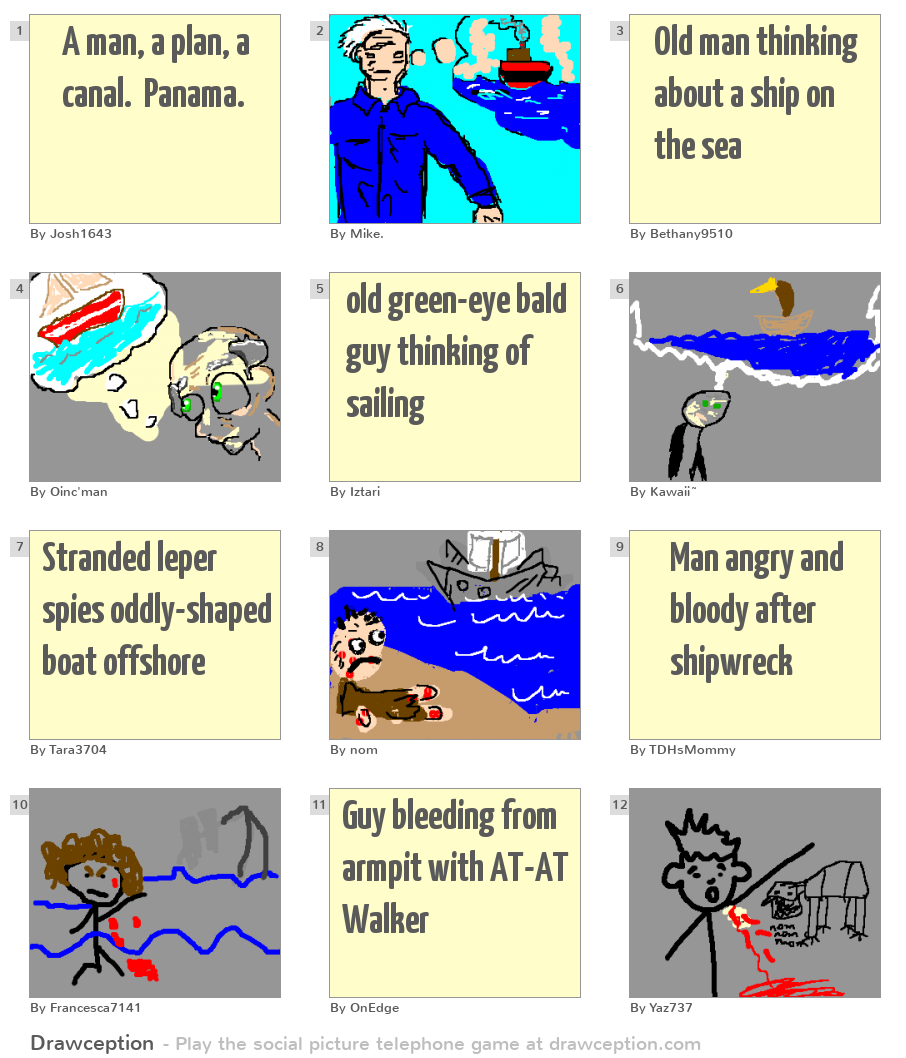The phrase “A man, a plan, a canal, Panama!” encapsulates a delightful array of linguistic artistry, showcasing the intricate twirls of language and its power to convey layers of meaning. At first glance, it may appear to be a whimsical arrangement of words, yet beneath its playful surface lies a profound exploration of human ambition, ingenuity, and the transformative nature of plans. This phrase offers a vivid illustration of how language can evoke imagery and evoke emotional responses while simultaneously offering an expansive narrative about infrastructure and identity.
To appreciate the full richness of this phrase, one must first acknowledge its structure. The statement employs a classic form of wordplay known as a palindrome, a linguistic feature that has fascinated scholars and lovers of language alike. A palindrome reads the same forwards and backwards, an attribute that not only lends rhythmic symmetry but also engenders a sense of closure and completeness. The phrase’s palindromic quality evokes a sense of balance, mirroring the very essence of the engineering feat it describes—the Panama Canal—an ambitious project that sought to unite the Atlantic and Pacific Oceans. This clever construction hypnotizes the reader, inviting them to explore the journey that unfolds within the confines of its carefully chosen words.
In dissecting the phrase further, one discovers additional layers of metaphor. The “man” refers not merely to an individual but symbolizes the archetypal figure of the empowered agent—humanity itself—driven by desire and purpose. This figure embodies the tenacity and resilience inherent in the spirit of exploration. The subsequent element, “a plan,” serves as a tangible representation of foresight and ambition; plans are the blueprints of progress, guiding actions toward outcomes. The implication is clear: nothing substantial is achieved without deliberate consideration and foresight.
Moreover, the phrase juxtaposes the abstract concept of planning against the monumental reality of the Panama Canal. When examining this dichotomy, one cannot help but marvel at the significance of the canal itself. It stands as a testament to human innovation, marking a pivotal moment in the history of transportation and trade. The symbolic intertwining of man, plan, and canal encapsulates a universal truth: grand designs are often the fruits of meticulous and strategic planning. This presents a case study in systematic ambition, showcasing the potential for great accomplishments to stem from well-conceived strategies.
As one delves deeper, the geographical and historical contexts of the canal reveal further dimensions to the phrase. Located in Panama, this canal epitomizes not just a geographical formation but also an ethos of connectivity. From its inception, the canal bridged disparate cultures and economies, facilitating an unprecedented flow of goods and facilitating international commerce. In this light, the phrase embodies a connectivity that transcends mere physical barriers, articulating a broader narrative about cultural exchange, global interdependence, and the widespread impact of human endeavors.
The phrase also invites reflection on the historical backdrop of the Panama Canal’s construction, a saga fraught with challenges, setbacks, and controversy. The endeavor required ambitious foresight and planning, Marcine ambition unfolding amid the frenzy of labor disputes, natural obstacles, and political machinations. The very notion of a man devising a plan to overcome insurmountable odds stands as a compelling allegory for the human condition. It evokes the larger narrative of exploration, colonization, and the quest for progress that reverberates throughout history. Thus, “A man, a plan, a canal, Panama!” emerges not only as a concise expression of wordplay but as a microcosm of human perseverance and the relentless pursuit of dreams.
This statement also serves as a reminder of the interplay between triumph and adversity. As the Panama Canal stands as a symbol of success, it is also an artifact of historical trauma for certain indigenous communities. The construction impinged heavily on local populations and ecosystems, underscoring the anthropological complexities entwined within colonial narratives and industrial advancement. In this sense, the phrase presents a duality—one of celebration over accomplishment and caution over its repercussions, urging contemplation of both the awe-inspiring and the ethically contentious aspects of progress.
The resonant appeal of the phrase extends beyond its grammatical charm. It has captured the imagination of numerous artists, writers, and intellectuals, transforming it into a cultural artifact. This phrase has been referenced in literature, utilized within the realms of popular culture, and even adopted by enthusiasts of puzzles and linguistics. Such engagement speaks to the human proclivity for wordplay, highlighting a universal affinity for clever expressions. It transcends linguistic barriers, as the structure itself can be experienced in various languages, each iteration conducting its unique rhythm and resonance.
In summation, “A man, a plan, a canal, Panama!” is not merely a humorous quip or an intriguing palindrome; it is a rich tapestry interwoven with themes of ambition, connectivity, and historical context. It occupies a multifaceted position in both linguistic playfulness and poignant reflection on human history. Its unique appeal lies within its ability to evoke imagery, challenge perceptions of authority and ownership, and articulate the duality of progress—celebrated and contested. As such, this phrase reaffirms the boundless capacity of language to encapsulate the intricacies of the human experience, compelling us to recognize the intersections of language, identity, and historical narrative.
